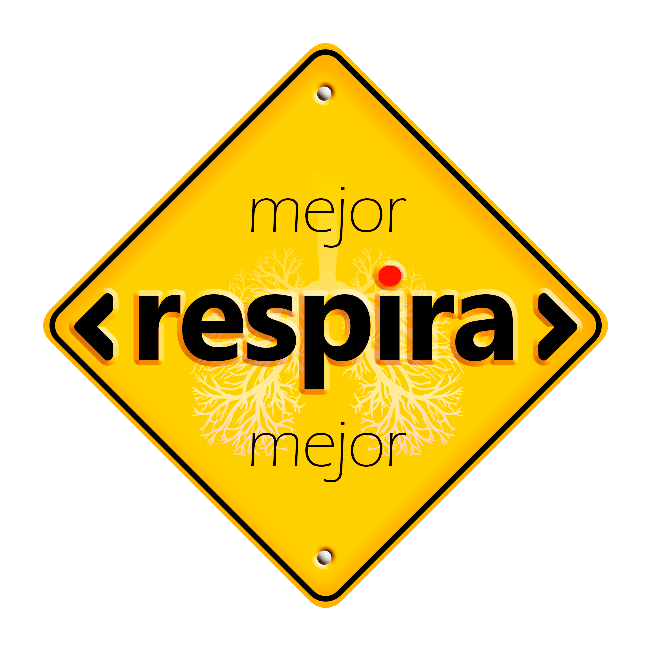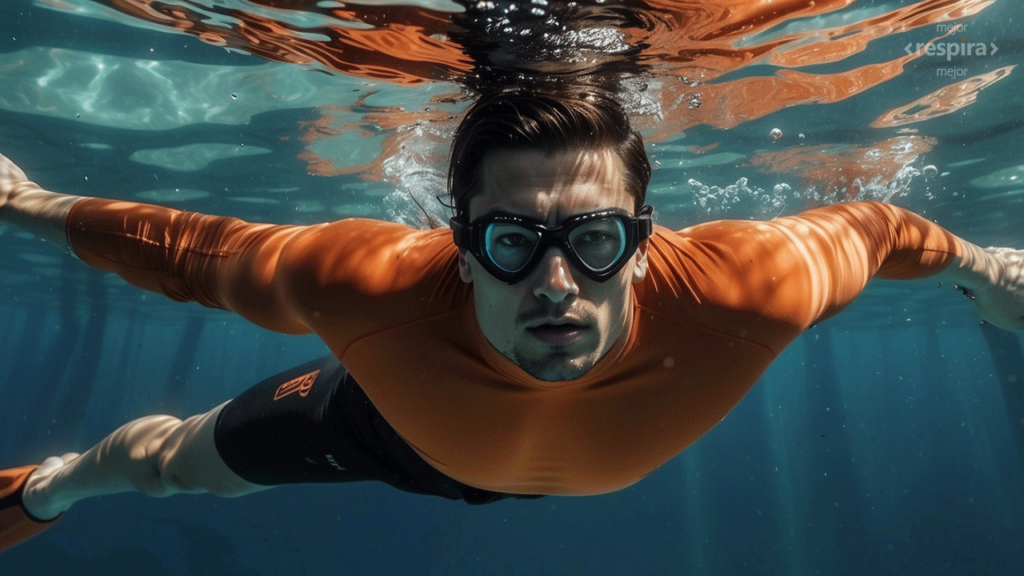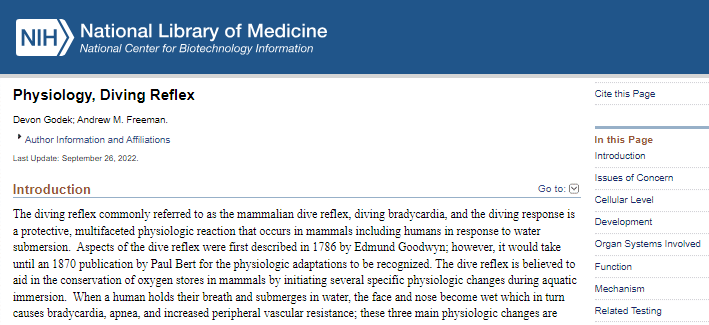The Science behind “Diving Reflection”
An immersion in Functional Breathing
Functional breathing is an essential aspect of our physiology that often goes unnoticed in our daily lives.. However, the diving reflection, also know as the mammalian dip reflex, offers us a fascinating window into the complex world of our physiological response to extreme conditions. In this writing, we will explore the reflection of diving, from its physiological foundations to its clinical relevance and potential impact on respiratory health.

“The diving reflection, a physiological wonder that awakens scientific curiosity, unfolds like a ballet of adaptive responses in the human organism and other mammals, offering a fascinating window into our relationship with water and its challenges.”
Fundamentals of the Diving Reflex
The diving reflex is an intricate physiological response that has evolved to ensure survival in aquatic environments. bradycardia, one of the key components of this mechanism, It is the result of a complex interaction between the autonomic nervous system and peripheral receptors, that coordinate the decrease in heart rate to conserve oxygen in immersion situations. This decrease in heart rate allows for efficient redistribution of blood flow, prioritizing the perfusion of critical organs such as the brain and heart.
In addition to bradycardia, sleep apnea plays a crucial role in preserving oxygen reserves during diving. Temporarily stopping breathing reduces oxygen loss and carbon dioxide buildup in the lungs, thus prolonging the air retention capacity and optimizing gas exchange in the tissues. This respiratory adaptation, along with bradycardia, ensures a continuous supply of oxygen to vital organs while minimizing energy expenditure associated with breathing and cardiac pumping.

Increased peripheral vascular resistance completes the triptych of physiological responses of the diving reflex.. This selective vasoconstriction in peripheral blood vessels diverts blood flow to essential organs., ensuring adequate perfusion even under prolonged immersion conditions. This strategic redistribution of blood flow optimizes the efficiency of oxygen transport and ensures survival in challenging aquatic environments.. On the whole, These components of the diving reflex illustrate the complexity and adaptability of the human body in the face of extreme conditions.

Limitations and Advances in Research
Despite its obvious relevance in human physiology, The study of the diving reflex is hampered by several limitations that challenge the complete understanding of this phenomenon.. One of the main barriers lies in the lack of robust data on best practices for inducing the reflex in clinical and experimental settings.. Variability in stimulation methods, such as applying cold stimuli to the face or immersion in water, makes it difficult to standardize procedures and compare results between studies.
Besides, Technological limitations in studying cardiovascular adaptations during diving represent a significant challenge in diving reflex research.. The difficulty of making precise measurements and continuous cardiovascular parameters, such as blood pressure and cardiac output, under immersion conditions limits the ability to fully understand the underlying mechanisms of this physiological response.. However, los recent advances in technology, such as the development of submersible echocardiography devices, offer new opportunities to overcome these limitations and deepen the understanding of the diving reflex.
In this sense, The integration of innovative tools and multidisciplinary research methods could open new perspectives in the study of the diving reflex. Collaboration between researchers in fields such as physiology, biomedical engineering and clinical medicine can provide a more holistic view of this phenomenon, thus allowing the development of more effective approaches to induce and study the diving reflex in various contexts.. On the whole, These technological and methodological advances offer a promising path toward a more complete and accurate understanding of this fascinating physiological response..
“Exploring the complex interactions at the cellular level that trigger the diving reflex immerses us in a microscopic world full of neuronal symphonies and biochemical signals., revealing the sophisticated engineering behind our response to immersion.”
Cellular Mechanisms and Reflex Development
At the cellular level, the reflection of diving unfolds as an intricate symphony of interactions between different types of receptors and neural pathways. The initial stimulation of trigeminal receptors and carotid chemoreceptors marks the beginning of a cascade of events that spread throughout the autonomic nervous system.. These signals are transmitted rapidly through neural pathways., both afferent and efferent, until you reach your final destination: the heart and peripheral blood vessels. This neural interconnection allows for precise coordination of heart rate and peripheral vascular resistance, thus ensuring an efficient physiological response to immersion in water.
The presence of the diving reflex in the human infants suggests its evolutionary importance in survival in aquatic environments from the early stages of human development. This observation raises intriguing questions about the adaptive function of this mechanism in the context of the evolutionary process. How has the reflection of diving contributed to the survival of our species throughout history? Are there differences in the expression and regulation of the diving reflex in infants compared to adults?? These questions open the door to new lines of research that could reveal fundamental aspects about human evolution and adaptation to aquatic environments..
As a last resort, Understanding the cellular mechanisms and development of the diving reflex not only provides detailed insight into how our body responds to water immersion., but also sheds light on broader aspects of the human physiology and biological evolution. By exploring these complex interactions at the cellular level, The mysteries of our innate connection to the aquatic environment can be unraveled and our understanding of the adaptability and plasticity of our autonomic nervous system can be deepened..

Clinical Importance and Therapeutic Potential
The clinical importance of the diving reflex extends beyond its fundamental physiological function and offers significant therapeutic potential in the management of cardiovascular disorders. In particular, its ability to induce bradycardia non-invasive through simple stimuli, like cold applications on the face, represents an attractive therapeutic option for disorders such as paroxysmal supraventricular tachycardia (TSVP). This ability to autonomously modulate heart rate offers a promising alternative to conventional pharmacological treatments., which may have unwanted side effects or be ineffective in some patients.
However, to fully harness the therapeutic potential of the diving reflex, It is crucial to establish standardized guidelines for their effective clinical application in various medical contexts.. This requires a deeper understanding of the underlying mechanisms of the diving reflex, as well as rigorous clinical studies that evaluate its effectiveness and safety in different populations and medical conditions.. Besides, Additional efforts are needed to develop specific devices and techniques that facilitate controlled and precise induction of the diving reflex in clinical settings., thus guaranteeing its safe and effective application as a viable therapeutic tool.
In summary, The diving reflex not only offers a fascinating window into the complexity of our autonomous physiology, It also represents an exciting opportunity for the development of new therapeutic strategies in the field of cardiology and cardiovascular medicine. By continuing to research and explore its clinical potential, New avenues may be opened to improve the management and treatment of a variety of cardiovascular disorders., thereby improving the quality of life and well-being of patients around the world.

Exploring the Therapeutic Power of Apnea Training
The method of Oxygen Advantage®, focused on functional breathing, offers an innovative perspective in the treatment of various respiratory and cardiovascular disorders. By integrating training techniques with apneas, This approach not only improves respiratory efficiency, but also promotes cardiovascular health and general well-being.
In <better.breathe.better>, We specialize in the practical application of the method of Oxygen Advantage®. Our goal is to help people optimize their breathing for optimal performance and a better quality of life.. Through personalized breathing assessments and training programs tailored to individual needs, We provide the tools and guidance needed to improve respiratory health and physical performance.

Conclusions
Research conducted on the diving reflex has provided a deeper understanding of this complex physiological phenomenon and its relevance to respiratory and cardiovascular health. The importance of bradycardia has been confirmed, apnea and peripheral vasoconstriction in preservation of oxygen reserves during the dive, as well as his contribution to the efficient redistribution of blood flow to vital organs such as the brain and heart.
The therapeutic potential of the diving reflex in the management of cardiovascular disorders presents a promising option for ttreatment of paroxysmal supraventricular tachycardia (TSVP) and other heart rate disorders. Besides, There has been increasing interest in the clinical application of the diving reflex in cardiovascular rehabilitation and sports performance. Training with breathing exercises that involve short apneas, medium and high intensity has shown significant benefits in improving lung capacity, cardiovascular efficiency and physical endurance.
If you are interested in exploring the therapeutic potential of apnea training and improving your functional breathing, We invite you to contact us. Let's start by evaluating your current breathing and designing a personalized training program to help you achieve your health and performance goals..
Don't wait any longer to improve your breathing and transform your life!!
THE SCIENCE OF BREATH
Below I leave at your disposal the link that served as a reference for this publication:
Devon Godek; Andrew M. Freeman.

categories
Recent posts
-
 The Impact of Respiratory Training: On Health and Daily PerformanceOctober 3, 2024/0 Comments
The Impact of Respiratory Training: On Health and Daily PerformanceOctober 3, 2024/0 Comments -
 LSD Breathing: Science and SuperpowerSeptember 13, 2024/
LSD Breathing: Science and SuperpowerSeptember 13, 2024/ -

-

Follow us on LinkedIn
By robledo 2024
Build in WordPress® con Elementor® and Oceanwp®
Certified Instructor of Oxygen Advantage®

